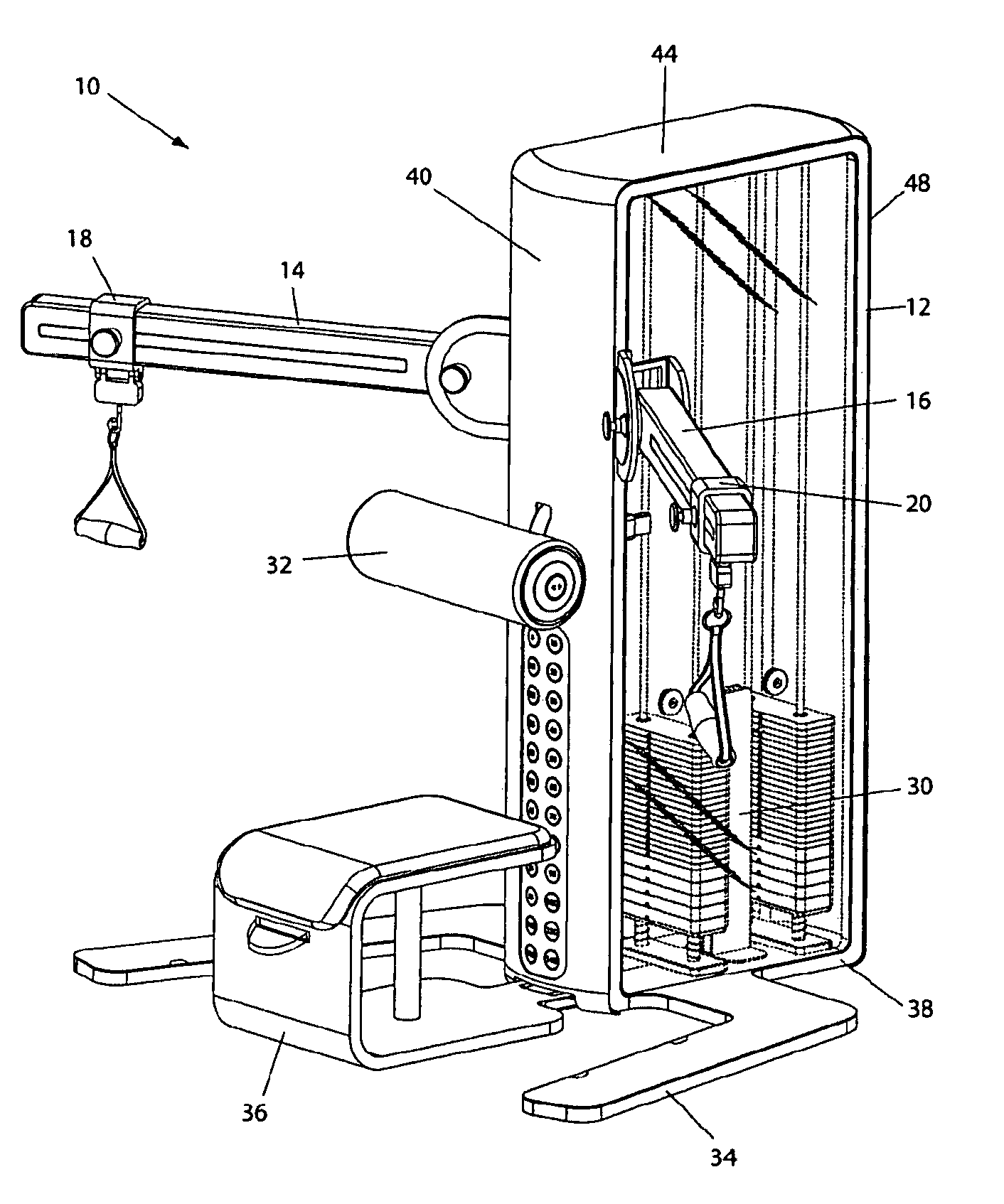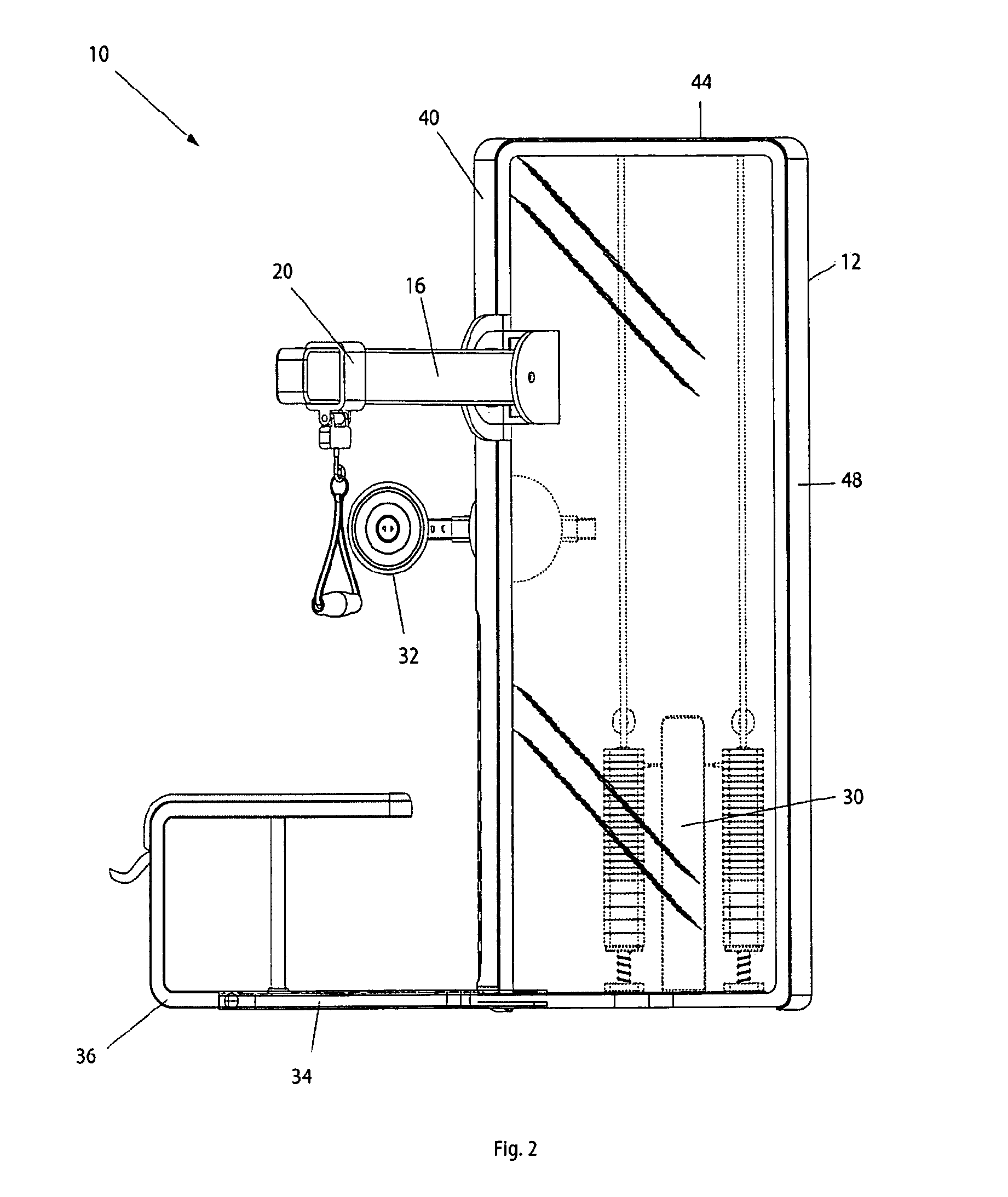Handicapped accessible exercise machine
a technology for wheelchair users and exercise machines, applied in the field of wheelchair accessible exercise machines, can solve the problems of difficulty, sometimes impossible, for handicapped users with limited mobility and dexterity to effectively use the machines, and users with diminished finger dexterity may have a great deal of difficulty operating conventional spring-loaded locking pins, etc., to achieve the effect of convenient and effective operation
- Summary
- Abstract
- Description
- Claims
- Application Information
AI Technical Summary
Benefits of technology
Problems solved by technology
Method used
Image
Examples
Embodiment Construction
[0058]As shown in FIGS. 1-4, the exercise machine 10 is generally provided with a central housing 12, pivoting extension arms 14 and 16, sliding cable guides 18 and 20, independent cable systems 22 and 24, user interfaces 26 and 28, a resistance assembly 30, an adjustable support pad 32, a wheelchair stabilization member 34, and a sliding bench 36. For the sake of convenience and clarity, terms such as “front,”“rear,”“top,”“bottom,”“up,”“down,”“inwardly,”“outwardly,”“lateral,” and “longitudinal” will be used herein to describe the relative placement and orientation of various components of the invention, all with respect to the geometry and orientation of the machine 10 as it appears in FIG. 1. Said terminology will include the words specifically mentioned, derivatives thereof, and words of similar import.
[0059]The central housing 12 is a vertically elongated, generally rectangular enclosure having a base 38, a front wall 40, a rear wall 42, and a top 44 that are preferably formed o...
PUM
 Login to View More
Login to View More Abstract
Description
Claims
Application Information
 Login to View More
Login to View More - R&D
- Intellectual Property
- Life Sciences
- Materials
- Tech Scout
- Unparalleled Data Quality
- Higher Quality Content
- 60% Fewer Hallucinations
Browse by: Latest US Patents, China's latest patents, Technical Efficacy Thesaurus, Application Domain, Technology Topic, Popular Technical Reports.
© 2025 PatSnap. All rights reserved.Legal|Privacy policy|Modern Slavery Act Transparency Statement|Sitemap|About US| Contact US: help@patsnap.com



